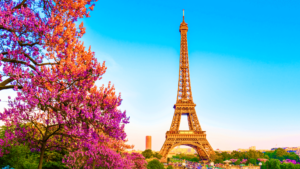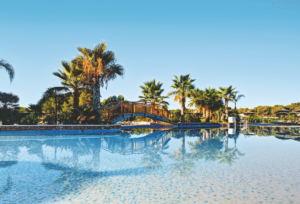It may sound like a sombre happening, but the South American festival culminating in Day of the Dead — or El Dia de los Muertos — on 2nd November is actually a colourful three-day celebration. Involving plenty of food and decorations, the festival sees families briefly welcome back the spirits of loved ones who have passed away.
A month before high season, when holiday prices are still low, you can join in a street party, admire the colourful gravesides and public altars or ofrendas, and enjoy Mexican traditional foods and hand-crafted sugar skulls. Day of the Dead is celebrated all over Mexico — with regional variants such as Mayan traditional celebrations around Cancun — but one of the best places to experience the wonder of this vibrant festival is in the hustle of Mexico City.
Feasting with the dead
Although essentially a private or family feast, if you are respectful, no one will mind your presence in the cemeteries and other public spaces where Mexicans celebrate their deceased. It is a wonderful site to behold, with some graves decorated like works of art with orange and purple flowers, streamers, candles and photos. This is a celebration with the dead, not of the dead, where families gather at gravesides and picnic there, laying muertos — the bread of the dead — and the favourite foods and gifts of their dead loved ones for them to enjoy. Some celebrate well into the night with traditional songs and tequila or shots of mezcal.
The best offerings in town
Temporary altars are also set up in people’s homes, but public offerings (or ofrendas) are easy to find in Mexico City — from those hosted in restaurants to those laid out at the city’s main square called Zócalo (Plaza de la Constitución) and at the Muertos exhibition at the Dolores Olmedo Art Museum in the far south of the capital, with a central theme that changes each year. The latter is also a great place to view works of famous Mexican artist couple Frida Kahlo and Diego Rivera, who had a fascination and connection with death that many Mexicans share.
Candy craft
If you have a sweet tooth, then you’ll love the sugar skulls, coffins and animals. They are a common site on the stalls around Day of the Dead and are gifts for the spirits of children, decorated with their name and left at the graveside. For a huge selection of sugar works, crafted by skilled artisans you can visit the city of Toluca, which hosts the Feria del Alfeñique fair every year from mid-October until the beginning of November.
Trick or treat
Halloween is beginning to influence Day of the Dead celebrations in Mexico City, with some children now dressing up and trick-or-treating, but you can always head to the rural village of Mixquic on the southwestern outskirts of the city for a more traditional affair. There are street stalls in the run-up to the celebration, and a procession of cardboard coffins heading to the candle-lit cemetery vigils. And although trick or treaters are not discouraged, in order for children to remember traditions they must pray at the home’s altar before they receive their bread or fruit treat.
An island of dolls
For a spooky experience you can visit Isla de las Munecas (Island of the Dolls), set between the canals of Xochimico, south of Mexico City. Never intended to be a tourist destination, from the island’s trees hang dolls and doll parts, which are dedicated to the lost soul of a girl drowned nearby. Even by daytime the soulless eyes of the dolls follow visitors, but by night the island is far more eerie — and local legends say that the dolls move, open their eyes and even whisper.
You may also like
mexico





